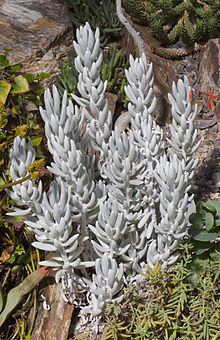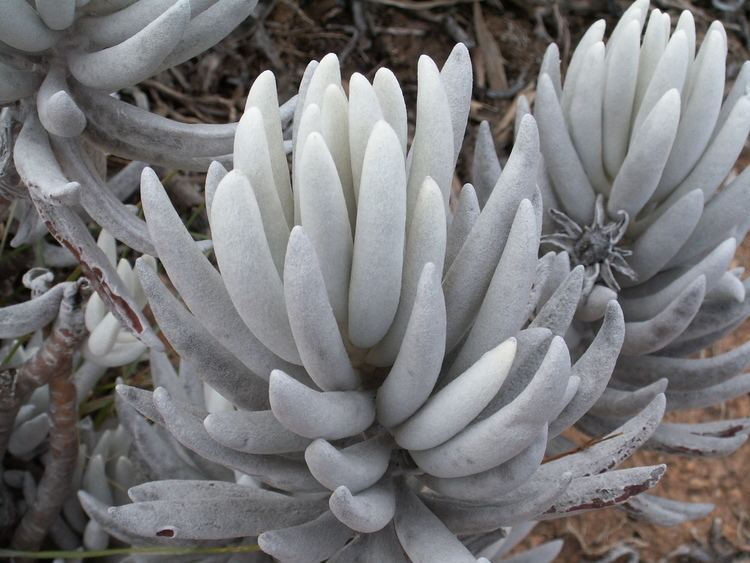Kingdom Plantae Tribe Senecioneae Scientific name Senecio haworthii Rank Species | Order Asterales Genus Senecio Higher classification Ragworts | |
 | ||
Similar Ragworts, Daisy family, Senecio rowleyanus, Senecio radicans, Senecio serpens | ||
Senecio haworthii top 5 facts
Senecio haworthii also known as Woolly senecio is a perennial dwarf shrub of the Senecio genus that grows in South Africa usually between the altitudes of 900 and 1200 meters.
Contents

History

Its first description was written by Adrian Hardy Haworth, in Miscellanea naturalia, 1803, p. 189, with the name of Cacalia tomentosa. Haworth stated that he had received the plant, introduced eight years before, from the Stockwell Botanical Garden of his friend Benjamin Robertson.
Description

The leaves are remarkably densely felted, so much so that the felt can be stripped off, dried, and used as tinder. The plant is accordingly called "tontelbos" in Afrikaans. The word means "tinder bush". Though its flowers are nothing special to look at, the plant is striking, easily grown, and fairly attractive; a plucked stem, or even a leaf, can be stuck into warm, not-too-dry earth, where it will strike root without special attention. Like most Richtersveld plants it does not do well in wet soil, but is not in general a demanding garden subject.
Culture
Like in nature, Senecio haworthii needs well-drained sandy loams, rare water and full sun.

